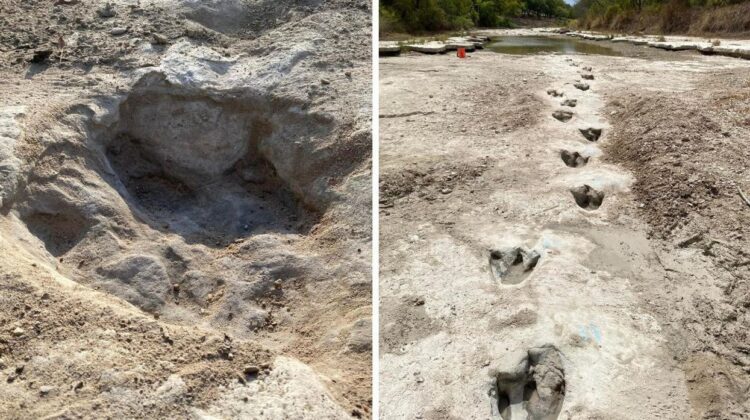
In a remarkable discovery, the prolonged drought in Texas has unveiled a glimpse into the ancient world. A dry river bed in Dinosaur Valley State Park has revealed a trail of dinosaur tracks dating back an astonishing 113 million years. These tracks, which had remained hidden since 2000, offer a captivating window into the lives of these long-extinct giants.
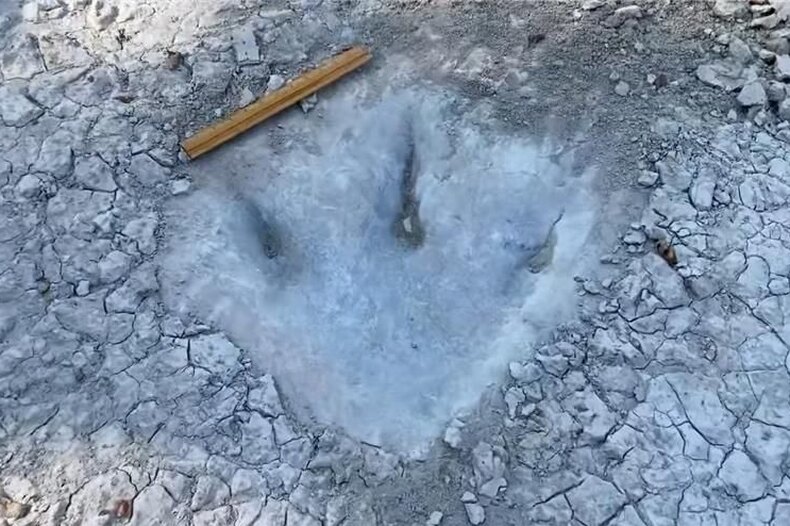
Dinosaur Valley State Park has long been renowned for its abundance of dinosaur tracks, attracting visitors eager to explore the prehistoric remnants themselves. However, the recent drought has exposed a new collection of tracks that had previously eluded human observation. Diligent efforts by park volunteers like Paul Baker and experts such as Glen Kuban have been instrumental in documenting and mapping these newfound treasures.
The park’s ongoing endeavors to clean and survey three key sites—B.P. Baker, Deino, and the Lone Ranger Trail—have yielded fascinating results. Each location has revealed fresh tracks, but it is the Lone Ranger Trail that boasts the most extensive set. Experts believe that these tracks belonged to an Acrocanthosaurus, a formidable bipedal carnivore resembling the famed Tyrannosaurus rex. Standing at approximately 15 feet tall and weighing several tons, this creature left an indelible mark on the ancient landscape.
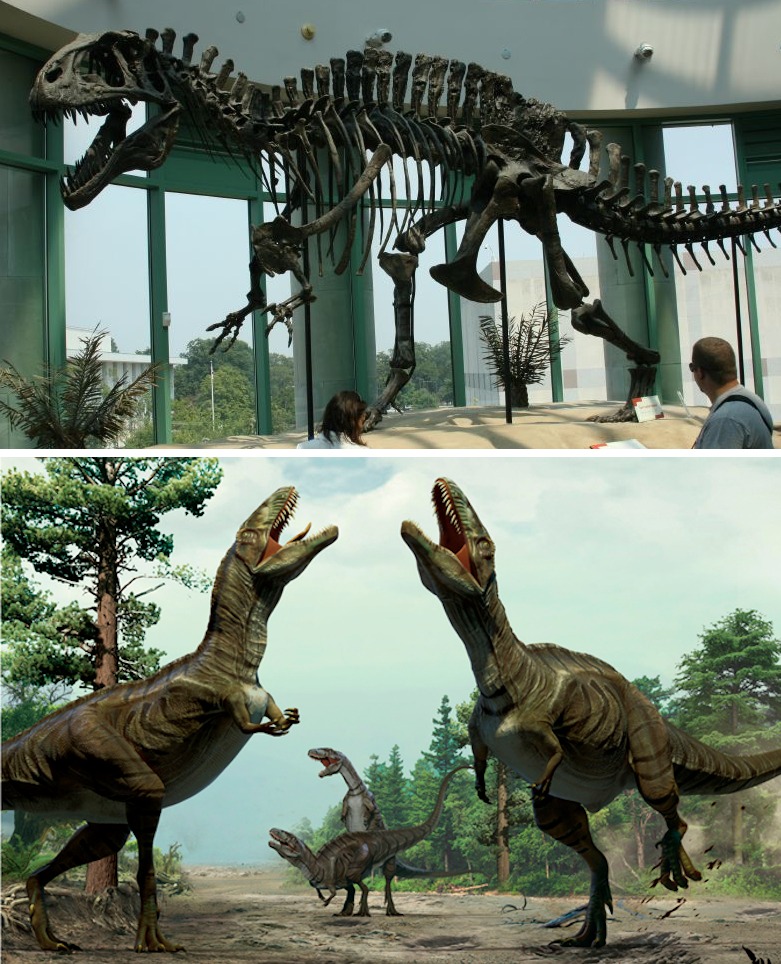
As the normally submerged and sediment-covered tracks have resurfaced due to the drying Paluxy River, scientists and park officials have been afforded a rare opportunity to study these ancient imprints. However, the capricious nature of weather means that rushing waters following a bout of rainfall could once again bury the tracks in sediment. Paradoxically, this natural cycle acts as a protector, preserving the delicate tracks and preventing them from succumbing to the elements.
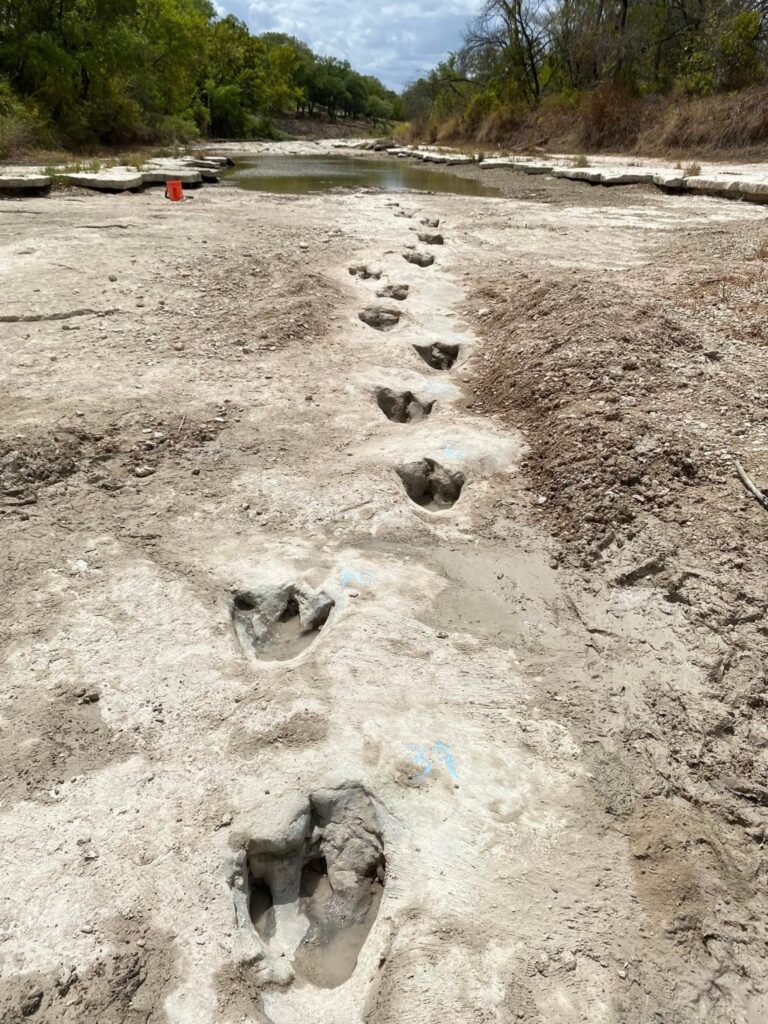
The park’s rich tapestry of tracks encompasses not only those of the Acrocanthosaurus but also those of the Sauroposeidon, a long-necked dinosaur. Researchers have previously mapped these footprints in an effort to gain insight into how these two species interacted with one another during the Mesozoic era.
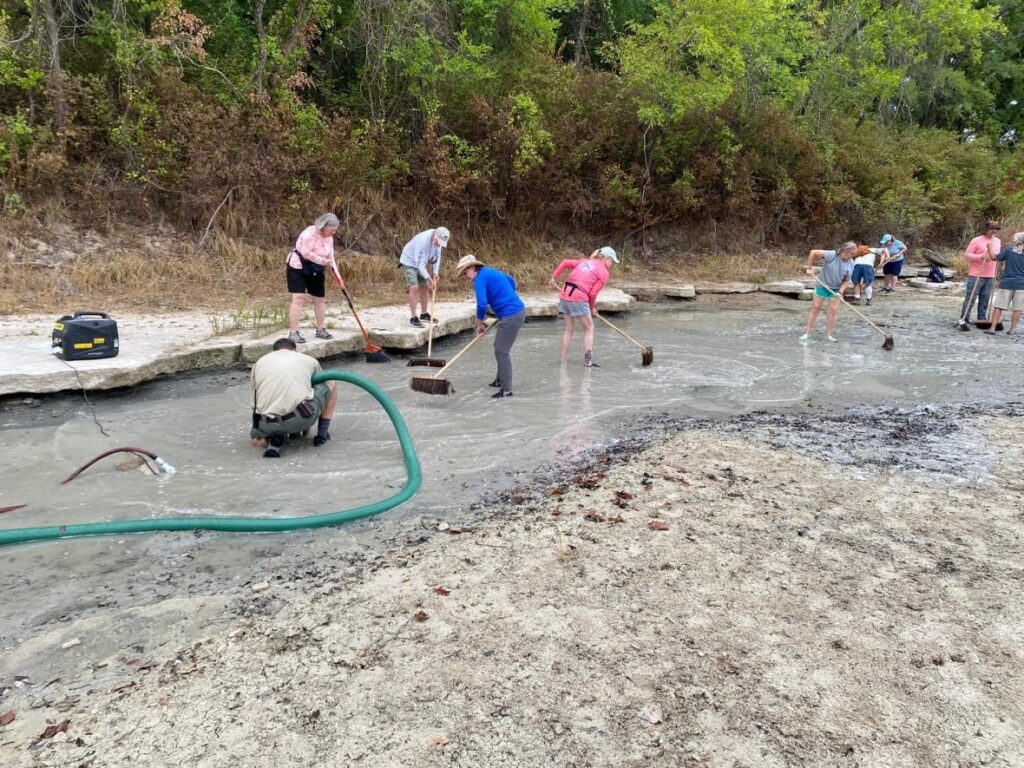
The discovery of these 113 million-year-old dinosaur tracks serves as a reminder of the incredible wealth of knowledge that lies hidden beneath our feet. The relentless drought has gifted us a fleeting glimpse into a bygone era when colossal reptilian creatures roamed the Earth. It is through the meticulous efforts of passionate individuals and the collaboration between researchers and park officials that we can piece together the puzzle of our planet’s remarkable past. As these tracks become reburied by nature’s hand, we can only marvel at the eons they have patiently waited to share their story with us once again.

Leave a Reply